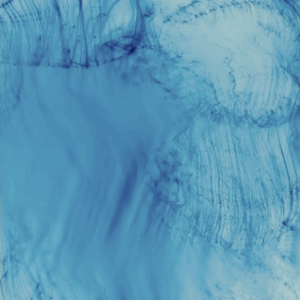JTF (just the facts): A total of 50 color photographs, unframed and affixed to the walls with magnets, and hung against pastel painted walls (pink, green, yellow, blue, peach) in the second gallery space. All of the works are archival pigment prints, made between 2013 and 2016 and printed in 2017. The prints are shown in five sizes: 10×8, 15×12, 20×16, 24×20, and 30×24 inches (or reverse) and are available in editions of 5+2AP. A monograph of this work was recently published by Chronicle Books (here) and is available from the gallery. (Installation shots below.)
Comments/Context: Delivering consistently playful humor in photography is a surprisingly difficult and underappreciated challenge. With just a few exceptions, we really haven’t seen much in the way of overt photographic comedy since since the joyfully cerebral quirkiness and optical illusionism of the photoconceptualists of the 1960s and 1970s. While certain contemporary photographers have regularly offered us examples of their superlative visual wit (a wacky Friedlander interruption, a clever Ghirri juxtaposition, or an oddball Parr discovery, to name a few), most of the photographic humor we see now leans toward much darker ironies, harsher satires, and edgier conceptual topics, where our reaction is a knowing wince or an acknowledging head nod just as often as it is an appreciative chuckle or smile.
Olivia Locher’s recent series I Fought the Law is a welcome exception to this prevailing rule. Each image in the project has a double layer of overt ridiculousness – the first identifies an oddball state law for each of the 50 states in the nation, and the second stages a direct photographic transgression of that very statute. So every picture works on two levels, both as a state-by-state trivia contest of uniquely American weirdness and as a delightfully flippant rebellion against that obvious legal absurdity. Not every strange law that Locher has identified is actually being enforced or is entirely in effect these days, but they were all on the books at one time or another, that very fact reminding us of the countless overlooked cultural eccentricities that lurk in our history.
Nearly all of the laws that Locher has chosen are prohibitions of one kind or another, ranging from the patriotic to the prudish, with plenty of stops at the downright perplexing. So American flags are protected against being placed on bars of soap (Nevada) or having polka dots painted on them (Washington), and outdoor nudity (Idaho), wearing transparent clothing (Rhode Island) or liquid latex body paint (Florida), having your pubic hair groomed by a hairdresser (Wyoming), owning more than two dildos (Arizona), or disrobing in front of a portrait of a man (Ohio) are all outlawed. But it’s the quirkiest of these bans and illegalities that are the most memorable. Depending on your home state, the rules prevent licking toads (Kentucky), picnics in graveyards (Georgia), serving wine in teacups (Kansas), spitting on seagulls (Virginia), defacing milk cartons (Missouri), and walking down the street carrying a violin in a paper bag (Utah).
Using this taxonomy of head-shaking realities as a template, Locher has staged individual scenes that document the deliberate breaking of these laws, each a simple brightly-colored arrangement of salty disregard. Her compositions are filled with pastel tones and bold still lifes, her styling mixing the aesthetics of commercial product photography (think Elad Lassry) and jaunty Pop kitch. This playfulness matches the inherent humor in the goofball transgressions she’s recreating – drinking perfume (Delaware), carrying an ice cream cone in your back pocket (Alabama), crossing state lines with a bird on your head (Minnesota), painting sparrows with intention of selling them as parakeets (Michigan), causing static (South Dakota), and riding a bicycle in a swimming pool (California). When things get more aggressively weird, like her knife through a stick of colored margarine (Vermont), the images edge toward the gleefully surreal stagings of Maurizio Cattelan and Pierpaolo Ferrari’s Toilet Paper magazine, or even a kind of retro-Dada obtuseness. (As an aside, there is an entertaining game to be played here by looking at the various images without the captions and trying to guess what the law being broken might be.)
Locher’s pictures are consistently lively and fun, and that’s not some sort of backhanded compliment – it takes hard work to make this kind of lightness seem easy. Each photograph in the series has its own conceptual inversion that is often thought provoking (or altogether puzzling), but the self-confident irreverence of their execution is what gives the images their sparkle and vitality. Not every picture here will induce a hearty guffaw, but even the most serious and jaded of viewers will be hard pressed not to find some breezy levity on these walls.
Collector’s POV: The prints in this show are priced as follows, based on size. The 10×8 prints start at $1000, 15×12 prints start at $1400, the 20×16 prints start at $1800, the 24×20 prints start at $2200, and the 30×24 prints start at $2600. Locher’s work has little secondary market history at this point, so gallery retail remains the best option for those collectors interested in following up.















